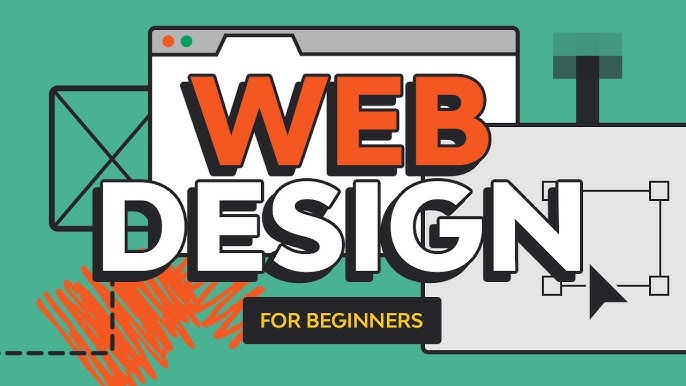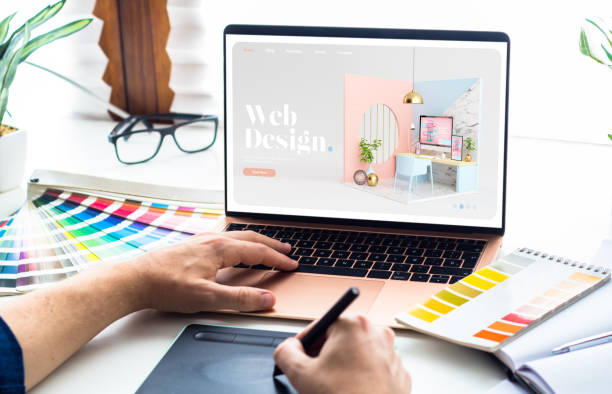Increase Conversion Fees with User-Centric Website Design Techniques
Maximize Individual Experience With Innovative Web Site Style Solutions
In today's digital landscape, taking full advantage of user experience with ingenious site layout services is necessary for services looking for to involve their target market efficiently. The combination of interactive aspects can additionally elevate the individual journey, prompting a reevaluation of standard design approaches.
Recognizing User-Centric Style

To execute user-centric design properly, it is necessary to conduct detailed research study, consisting of customer meetings, surveys, and use screening. These research techniques supply important data that educates layout choices, ensuring that the final item aligns with customer expectations. Additionally, creating individual characters can assist designers understand and imagine with the end-users, directing the design procedure towards much more pertinent remedies.
In addition, repetitive design is an essential component of user-centric approaches. By constantly testing and refining layouts based on customer comments, designers can determine pain factors and areas of renovation, leading to a much more polished end product. Ultimately, user-centric layout is not just a phase in the advancement procedure but a continual commitment to focusing on user needs, resulting in even more efficient and engaging electronic experiences.
Significance of Responsive Layouts
As electronic interactions significantly occur across a selection of gadgets, the importance of receptive formats can not be overstated. A receptive layout makes sure that an internet site adapts seamlessly to various display dimensions, from desktop computer monitors to smartphones. This flexibility is crucial in today's multi-device landscape, where individuals anticipate a appealing and consistent experience despite exactly how they access content.
The primary benefit of receptive style is improved user fulfillment. When an internet site is optimized for all devices, it decreases the requirement for zooming, scrolling, or horizontal navigating, which can discourage customers and lead to higher bounce rates. Furthermore, search engines like Google prioritize mobile-friendly web sites in their ranking formulas, making responsive designs necessary for reliable search engine optimization approaches.
Moreover, receptive layouts assist in less complicated maintenance and updates. As opposed to taking care of separate variations of a website for various gadgets, a solitary, fluid design can be changed, saving time and sources. This all natural approach not just improves effectiveness however additionally cultivates brand coherence throughout platforms. Eventually, buying receptive designs is not simply a pattern; it is an essential principle of modern-day website design that dramatically boosts user experience and interaction.
Enhancing Navigating and Ease Of Access
Efficient navigating and availability are pivotal parts of a well-designed web site, considerably influencing customer interaction and satisfaction. A straightforward navigation structure allows visitors to locate details promptly and with ease, minimizing irritation and boosting the probability of repeat gos to. Carrying out clear, detailed tags for navigating web links, in addition to a logical pecking order, can assist customers seamlessly via the internet site.
Availability is equally critical, making certain that all customers, despite their impairments or capabilities, can interact with the website successfully. This can be attained with the use of ideal shade contrasts, message dimensions, and alt message for images, which with each other enhance the experience for visually damaged individuals. Furthermore, including key-board navigation and display viewers compatibility broadens accessibility for customers with diverse requirements.
Normal functionality testing can offer important insights into navigation performance and availability issues. By collecting feedback from actual users, designers can determine pain points and make educated modifications. Ultimately, prioritizing navigating and ease of access not only fosters inclusivity but likewise grows a favorable customer experience, reinforcing the brand name's dedication to high quality and customer treatment in a progressively electronic landscape.
Using Visual Pecking Order Efficiently
Aesthetic pecking order functions as a directing framework in site layout, directing customers' interest to one of the most important components on a page. By tactically arranging aesthetic elements such as color, spacing, and typography, designers can create a clear pathway for users to this article comply with. This framework not only enhances customer experience but likewise boosts material understanding.
One efficient way to develop visual hierarchy is with making use of size and range. Bigger components normally attract more focus, making headlines and crucial visuals prominent. Enhancing this technique with contrasting colors can even more set apart key material from additional information, making sure that essential info attracts attention.
In addition, the setup of elements plays an essential function in directing user interaction. Employing a grid format can create a cohesive flow, while whitespace aids to different material and minimize cognitive lots - Website Design. This deliberate spacing permits users to refine information extra quickly, resulting in improved involvement
Last but not least, using constant design patterns helps enhance visual power structure, supplying customers with familiar hints i thought about this as they browse the site. By prioritizing these principles, designers can properly make best use of individual experience, making sure that visitors can easily locate the information they seek.
Incorporating Interactive Aspects
The unification of interactive aspects into site style can substantially enhance user interaction and total experience. Interactive functions such as surveys, sliders, and quizzes not only captivate individuals yet likewise advertise energetic participation, making the searching experience much more unforgettable. By motivating individuals to engage, websites can effectively preserve focus and reduce bounce prices.
Moreover, incorporating dynamic material like animations and float impacts adds an appealing layer of interactivity. These components can assist customers with ease via the site, highlighting crucial info and phones call to action. For example, animated switches can draw interest and boost click-through rates.
Additionally, personalization through interactive devices such as chatbots or referral engines permits sites to provide to private preferences, cultivating a feeling of link. This customized strategy not just boosts user contentment but likewise motivates repeat check outs.
Integrating analytics devices to track communications provides useful understandings right into user behavior, enabling continuous improvement of the interactive components. Ultimately, a well-designed interactive experience changes a passive browsing session right into an engaging trip, leading to raised user complete satisfaction and loyalty. As a result, integrating interactive elements is crucial for maximizing customer experience in modern-day internet site style.
Verdict

In today's digital landscape, making best use of user experience with ingenious site layout services is necessary for businesses looking for to involve their audience successfully. Ultimately, prioritizing navigating and accessibility not just cultivates inclusivity but also cultivates a favorable individual experience, reinforcing the brand name's commitment to high quality and individual care in a progressively electronic landscape.

In final thought, making best use of individual experience through cutting-edge internet site layout remedies necessitates a dedication to user-centric principles. Website Design.